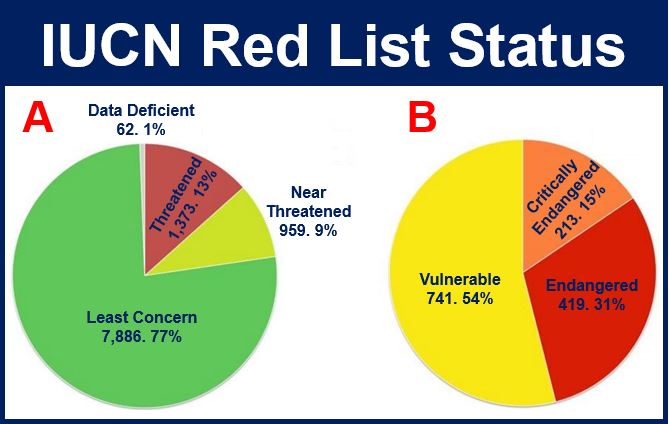Puffins and turtle doves are in serious decline across Europe, as are several other bird species, according to a new report announced by BirdLife International on behalf of the International Union for Conservation of Nature.
Two other British bird species, the grebe and pochard are also in danger of global extinction, the Royal Society for the Protection of Birds (RSPH) reported on Thursday.
There are now eight bird species in the UK considered to be facing the risk of extinction.
Ornithologists report that a further 14 species of bird in the UK are now classed as Near Threatened – this means that if their status deteriorates any further, they could also be at risk of extinction.

Martin Harper, Conservation Director of the RSPB, commented:
“Today’s announcement means that the global wave of extinction is now lapping at our shores. The number of species facing extinction has always been highest in the tropics, particularly on small islands. But now the crisis is beginning to exact an increasingly heavy toll on temperate regions too, such as Europe.”
“The erosion of the UK’s wildlife is staggering and this is reinforced when you talk about puffin and turtle dove now facing the same level of extinction threat as African elephant and lion, and being more endangered than the humpback whale.”
Fate of African vultures deteriorates
A number of African vulture species have now entered the Critically Endangered list – this is one step below Facing Global Extinction.
Earlier this year, Natonal Geographic reported that vultures across Africa are crushed by wind turbines, electrocuted by power lines, their brains are ground by witch doctors who believe they have magical powers, and they die after eating pesticide-laced carrion targeted for lions and other predators.
Some information on British birds
A number of themes emerge after the list of changes to this year’s red list of British birds.
Marine Ducks: the common eider sees its status deteriorate, joining the velvet scoter and long-tailed duck as species of concern.
Wading Birds: there is an ongoing and progressively intense threat to godwits, lapwing, oystercatcher, curlew and knot.
Seabirds: the razorbill, puffin and some other species saw their status worsen.
More information on this year’s changes
Atlantic Puffin: also known as the common puffin (Fratercula arctica), still has a global population in excess of one million. However, breeding failures in some important colonies over the past few years have been worryingly high.
There has been a severe decline in the number of young puffins being recruited into the breeding population.
In the Faroe Islands, Norway and Iceland, which hold 80% of the European population, numbers have fallen considerably.
Fair Isle and the Shetland Islands in the UK have seen populations plummet. However, it is doing well in other parts of the country.
Turtle Dove: Streptopelia turtur used to be a familiar visitor across Europe, including the south-east of England.
Since the turn of the century, populations across the continent have declined by over 30%. Its status has deteriorated from Least Concern to Vulnerable.
Experts from the RSPB and BirdLife International partners are currently trying to find out why numbers are falling in the UK and the rest of Europe.
The turtle dove population is fallen by more than 90% in Britain since the 1970s.
Pochard: Aythya ferina occurs widely across Europe and Asia. In Europe, populations across the continent have plunged – a trend that is set to continue, experts say. Globally, it has been uplisted to Vulnerable.
The number of nesting and wintering pochard has deteriorated significantly in Britain.
Pochards breed in temperate and northern Europe into Asia. They are migratory birds and spend winter in the southern and west of Europe.
Slavonian Grebe: also known as the horned grebe (Podiceps auritus), this species occurs across northern Asia, northern Europe and North America. In North America, where most horned grebes occur, numbers have plummeted. Its status has been altered to Vulnerable.
In the British Isles, Slavonian grebes, which birders call ‘Slav Grebe’ or simply ‘Slav’, nest only in the Scottish Highlands, where numbers have fallen.
Some promising news
The Seychelles warbler, also known as Seychelles brush warbler (Acrocephalus sechellensis) is making a comeback. The bird used to be one of the rarest songbirds in the world.
After its population dropped to just 26 birds in 1968, there were about 2,800 of them in 2014. Its status has improved from Vulnerable to Near Threatened.
Head of Reserves and Protected Areas at the RSPB, Gwyn Williams, said:
“Today’s assessment is a warning that nature is in trouble, but with funding and the right conservation measures threatened species can recover.”
Video – Birds at risk of extinction
